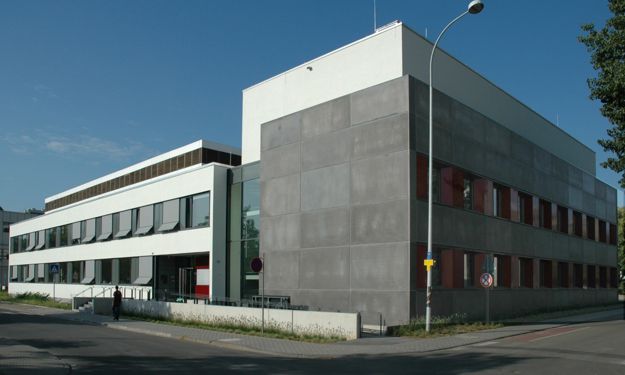The new heavy isotope mendelevium-244 and a puzzling short-lived fission activity
Mendelevium-244 was first produced in 2018 / Experiments indicate an unusual short-lived fission activity...>
Researchers present concept for a new technique to study superheavy elements
Merging methodologies from physics and chemistry for the optical spectroscopy of superheavy elements...>
Giersch Excellence Award“ für Raphael Haas
Raphael Haas, PhD student in the group of Professor Christoph Düllmann, is the recipient of an „Giersch Excellence Award“ for outstanding performance during the PhD phase....>
Nuclear reaction studies of cold fusion reactions for the production of the heaviest elements
A collaboration at Australian National University (ANU) in Canberra, Australien, with scientists from the Institute of Nuclear Chemistry, Helmholtz Institute Mainz and GSI Darmstadt has performed nuclear reaction studies to elucidate the dynamics of nuclear reactions, which are useful for the production of the heaviest elements....>
Nuclear reaction studies of cold fusion reactions for the production of the heaviest elements
A collaboration at Australian National University (ANU) in Canberra, Australien, with scientists from the Institute of Nuclear Chemistry, Helmholtz Institute Mainz and GSI Darmstadt...>
First Ionization Potentials of Fm, Md, No, and Lr:
Filling-Up of 5f Electrons and Confirmation of the Actinide Series...>
Precise time measurements play a vital role in our daily life. They allow reliable navigation and accurate experimenting and provide a basis for world-wide synchronized exchange of data...>
The direct detection of the exotic isomeric state in thorium-229 at the LMU Munich, achieved in collaboration with the Institute of Nuclear Chemistry belongs to the IOP's "Physics World Top Ten Breakthroughs of the Year 2016" ...
New particle accelerator generating radioactive isotopes for use in nuclear chemistry will be employed to create new medical radiopharmaceuticals ...
In the end of 2015, the 100th GE MINItraceTM cyclotron was delivered to the Institute of Nuclear Chemistry at the University of Mainz in Germany and was nicknamed “Lise Meitner” in honor of the Austrian physicist of the same name. ...
Univ.-Prof. Dr. Frank Rösch receives award for his dedicated career, contribution to clinical Nuclear Medicine practices, teaching and training ...
An international team of scientists has succeeded to create and detect extremely short-lived atomic nuclei of the element uranium. Having far fewer neutrons than the kind of uranium nuclei found in nature, they exist only for about a millionth of a second. The new data provide key information on how the numbers of neutrons and protons inside exotic heavy nuclei influence their stability. This is important to give better guidance for experiments on the search for new superheavy elements. ...
For the User Facility at the research reactor TRIGA Mainz – one of the key facilities of the research cluster of excellence PRISMA - an experimental program with ultra-cold neutrons (UCN) was recently carried out in a three weeks long beam time that ended May, 8th 2015. ...



